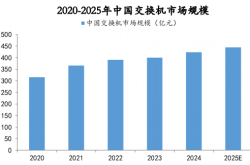Robotaxi Revolutionizes Mobility Platforms: Cao Cao Mobility's Expansion and Ruqi's Underestimated Potential
![]() 08/31 2025
08/31 2025
![]() 605
605
Source | Yuan Mei Hui
Mobility platforms with visions extending beyond ride-hailing services are taking center stage in the industry.
On August 26, Cao Cao Mobility and Ruqi Mobility, two Hong Kong-listed mobility service companies, released their interim financial reports for 2025. Both companies reported significant revenue growth exceeding 50% and improved gross margins, accompanied by narrowed losses.
Specifically, Cao Cao Mobility's revenue during the reporting period stood at 9.456 billion yuan, surpassing that of Ruqi Mobility. However, Ruqi Mobility's revenue grew more rapidly on a year-on-year basis, increasing by 61.7%, over 8 percentage points higher than Cao Cao Mobility. In terms of profitability, Cao Cao Mobility's gross margin rose by 1.4 percentage points to 8.4% in the first half of 2025, while Ruqi Mobility achieved a positive gross margin, increasing from -3.1% in the same period in 2024 to 2.2%, an improvement of 5.3 percentage points.
There are differences in the statistical methods employed by the two companies. If calculated using a consistent method, Ruqi Mobility's gross margin would surpass that of Cao Cao Mobility. In their financial reports, Cao Cao Mobility includes "aggregation platform commissions" in sales and marketing expenses, whereas Ruqi Mobility includes "third-party mobility service platform service fees" in cost of revenue. Essentially, both fees represent the same type of "platform cooperation fee" in the industry. When compared under the same method, after deducting traffic platform commissions from Cao Cao Mobility's disclosed gross profit, its gross margin would be approximately 1%.
With improved revenue scale and gross margins, Cao Cao Mobility and Ruqi Mobility narrowed their losses by 39.8% and 62.3%, respectively. The capital market has recognized the performance of these two mobility service companies in the first half of the year. Cao Cao Mobility's share price has continued to rise since its listing in June this year, with an increase of over 130% as of press time.
In comparison, although Ruqi Mobility's share price growth has not been as robust as Cao Cao Mobility's since its listing a year ago, it has still increased by over 60% from its low in late April this year as of press time. Some believe that while Cao Cao Mobility's revenue is 5.6 times that of Ruqi Mobility, Ruqi Mobility's market capitalization is only one-eighteenth of Cao Cao Mobility's. Coupled with its impressive revenue growth rate and gross margin performance, Ruqi Mobility appears to be undervalued as an investment target, a view supported by the consistently increasing trading volume in recent times.
01
Core Business and Second Growth Curve
Both Cao Cao Mobility and Ruqi Mobility attribute their impressive performance in the first half of the year to two factors: effective cost reduction and efficiency enhancement measures, and positioning Robotaxi as the company's second growth curve.
In the first half of this year, with a large influx of new drivers and vehicles into the industry, the ride-hailing market witnessed a new round of price wars. However, unlike earlier proactive "money-burning" strategies by platforms to capture new markets, this time it was a passive battle with limited resources that platforms could invest. Driver income suffered as platforms struggled to maintain competitiveness.
Clearly, this is not a sustainable cycle. To avoid being drawn into such a competitive quagmire, Cao Cao Mobility and Ruqi Mobility have adopted distinct strategies.
'We have enhanced user satisfaction and loyalty by continuously expanding our customized fleet size,' Cao Cao Mobility emphasized in its interim report, highlighting its unique customized vehicle model as a key weapon to tackle market challenges.
The so-called customized vehicles refer to two models specifically designed for the ride-hailing business by Cao Cao Mobility, leveraging its backing by Geely Group. These vehicles focus on operational cost control for drivers and travel experience for passengers, resulting in lower overall vehicle costs and better balancing the interests of the platform, drivers, and passengers compared to traditional ride-hailing vehicles.
Data indicates that Cao Cao Mobility has increased its average fare per passenger to 28.9 yuan through its customized vehicle strategy, approximately 20% higher than the industry average.
Unlike Cao Cao Mobility's hardware-centric approach to combating price wars, Ruqi Mobility focuses on improving the quality of ride-hailing operations.
In Ruqi Mobility's home base of Guangzhou, a well-established ride-hailing operation system has allowed it to capture nearly 15%-18% of the market share. Data from the Guangzhou Municipal Transportation Bureau shows that this local mobility platform's compliance rate has consistently remained above 95%, with a complaint rate far below the industry average, fostering a differentiated reputation. Data reveals that Ruqi Mobility's average fare per passenger during the reporting period was 27.7 yuan, a slight increase of 3.7% year-on-year.
The ripple effect model involves expanding from Guangzhou as the core to the Guangdong-Hong Kong-Macao Greater Bay Area and the entire province of Guangdong, emphasizing both the quantity and quality of city expansion. By efficiently replicating proven market strategies, operational experience, and management systems in new markets, Ruqi Mobility achieves efficient growth with lower customer acquisition costs.
As of now, Ruqi Mobility has covered 94 cities based on the ripple effect model, with market shares exceeding 5% in second-tier cities such as Foshan, Dongguan, Zhongshan, and Huizhou in the Guangdong-Hong Kong-Macao Greater Bay Area. Its overall market share in the Greater Bay Area is approximately 12%, second only to Didi.
However, whether it's Cao Cao Mobility's customized vehicle model or Ruqi Mobility's ripple effect model, these strategies primarily aim to ensure the competitiveness of the basic mobility business. What truly places these two mobility service companies at the forefront of the industry is Robotaxi, which was prominently featured in both interim financial reports.
02
Robotaxi: Large and Comprehensive vs. Small and Refined
Data indicates that while the Robotaxi businesses of Cao Cao Mobility and Ruqi Mobility are still relatively small in scale, they are both experiencing rapid growth. Taking Ruqi Mobility as an example, the order volume for its Robotaxi-related travel services in the first half of 2025 increased by over 470% year-on-year.
The growing popularity of the Robotaxi concept, coupled with the operational potential demonstrated by related businesses, has led Cao Cao Mobility and Ruqi Mobility to view it as their second growth curve. The difference lies in Cao Cao Mobility's pursuit of a full-chain closed loop for its Robotaxi business, while Ruqi Mobility focuses on becoming the 'infrastructure expert' within the ecosystem.
'We will collaborate closely with Geely Group and our business partners to develop autonomous driving technology and customized vehicles pre-installed with our proprietary autonomous driving components and related applications,' Cao Cao Mobility outlined in its interim report, showcasing its ambition for the Robotaxi business that extends beyond fleet operations, encompassing everything from autonomous driving software to vehicle customization.
In other words, Cao Cao Mobility aims to create a comprehensive Robotaxi ecosystem. While this plan holds immense potential, it also presents greater challenges, as it means facing more competitors, including domestic players such as Luobo Kuaipao, Pony.ai, and WeRide, who are further along in their progress.
In contrast, Ruqi Mobility's goal is to become a service provider focused on providing online and offline operations for Robotaxi fleets. According to the 'Robotaxi+' strategy officially announced in July, Ruqi Mobility plans to establish a three-tier Robotaxi maintenance and operation network covering 100 core cities over the next 10 years, comprising Ruqi Robotaxi Quick Response Fields, Ruqi Robotaxi Maintenance Stations, and Ruqi Robotaxi Hub Centers, totaling 1,000 sites, forming a comprehensive capability to support the offline maintenance of 100,000 Robotaxis annually.
Ruqi Mobility's strategy of occupying the 'infrastructure expert' niche in the Robotaxi ecosystem aligns with the challenges encountered in promoting industry development in another Robotaxi demonstration area across the ocean - the San Francisco Bay Area.
It is reported that during Waymo's expansion of Robotaxi public operations in the San Francisco Bay Area this year, offline operation issues such as charging, maintenance, and parking have emerged as typical pain points. Therefore, since July this year, Waymo has successively announced partnerships with car rental companies such as Avis and Avis Budget Group to address the offline maintenance issues of its Robotaxi fleets.
Compared to car rental companies, Ruqi Mobility's advantages are evident.
While it is still premature to determine which direction Cao Cao Mobility and Ruqi Mobility are taking in their respective transitions to Robotaxi is superior, it is certain that Robotaxi has already redefined the value of these two mobility service companies.
Some images are sourced from the internet. Please inform us for deletion if there is any infringement.








